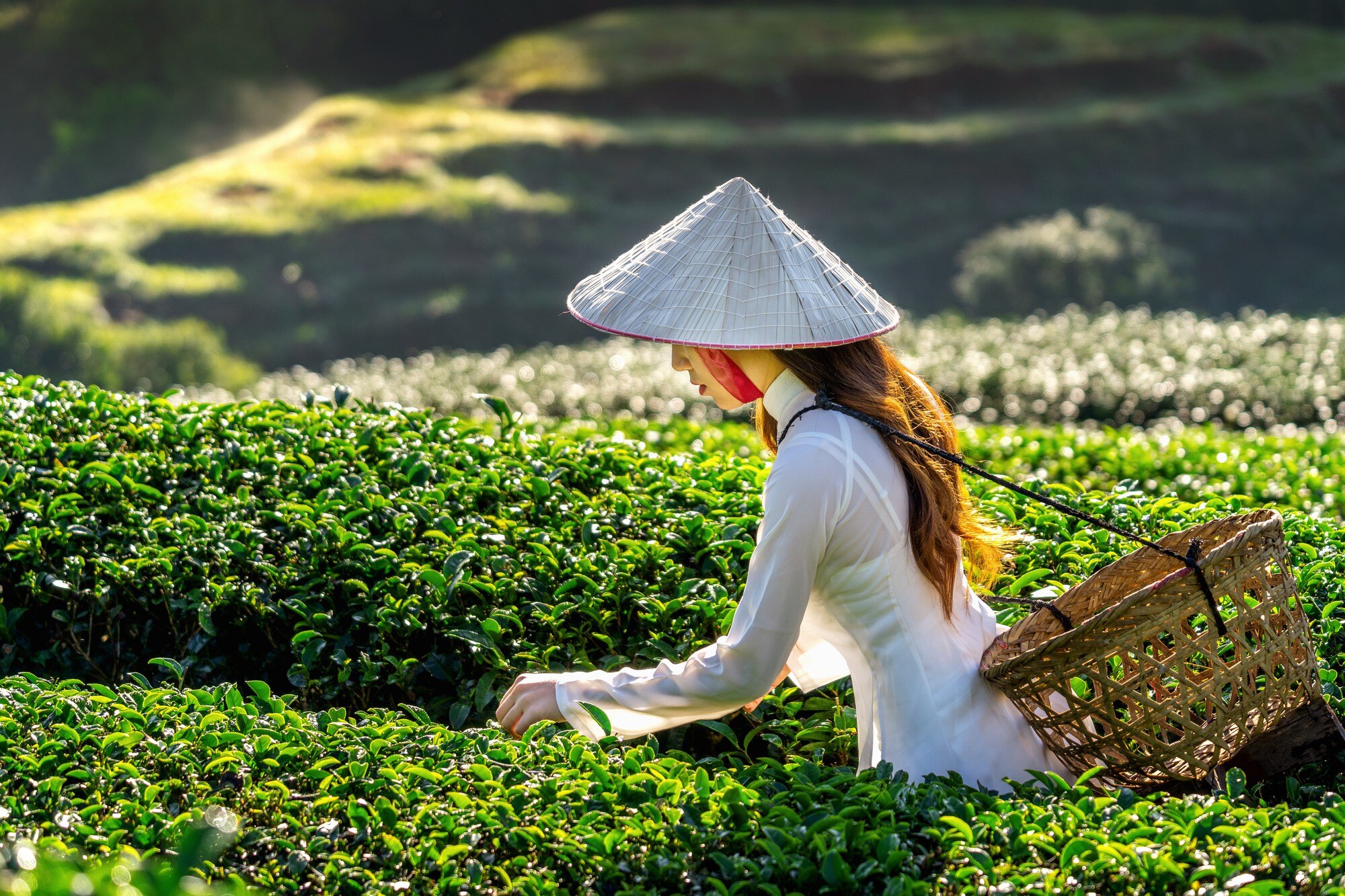
Photo: Freepik
Wallace Stevens once said, “The most beautiful thing in the world is, of course, the world itself”.
What do you think about this quote?
As a group of people having a deep appreciation for travel, the way our company perceived it was special. We deem that: By the act of going, exploring, and immersing oneself in the global landscape - full of stunning places and soulful human beings, one is feasting on the beauty of the world indeed.
With that being said, in this article, we are delighted to introduce to you our top 5 landmarks of Vietnam, which hopefully will make you cherish the world and feel the beauty more.
1. Mount Fansipan - The Roof of Indochina
Located in Lao Cai province, Mount Fansipan is proudly the highest peak in Vietnam and the Roof of Indochina with an elevation of 3.143 meters above sea level. Reaching the top, you may drop your jaw at the breathtaking view of floating clouds and ethnic villages sprawling by endless green terraced rice fields, along with the diversity of flora and fauna that are only inhabitant in mountainous top areas.
Don’t worry that you cannot finish the trail because there are two ways to get to the top of Fansipan Mountain up to now.
By hiking
Of course, hiking! Nothing’s better than a rewarding feeling after overcoming challenges to get to the destination on your own. However, the road to Mount Fansipan can be quite dangerous and seemingly endless, with approximately 2-3 days of adventure. Visitors should be in good physical health and are advised to equip themselves with professional mountain climbing gear, hiking experiences, and food on the road.
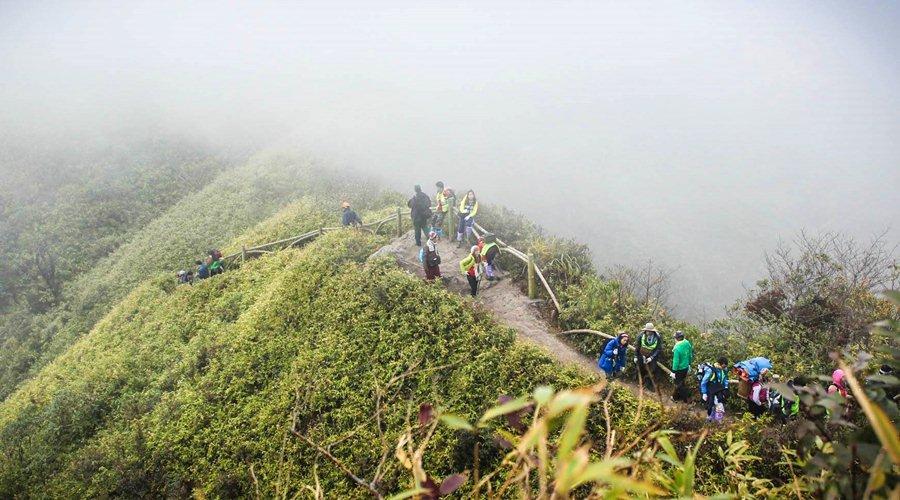
Source: Collected
By cable car rides
From the Mountain Train carries you to Muong Hoa Valley, you can hop to the cable car at the station there for a quick and convenient solution- many people opt for this method. With the 15-minute ride, you can witness first hand a magnificent view surrounded by clouds and wind swirling up close. If you are afraid of heights, consider taking medicines before en route.
 Source: Collected
Source: Collected
Tips: You can update the latest information by visiting the official website of Sun World Fansipan Legend.
2. Phong Nha-Ke Bang National Park
Vietnam is home to myriads of plants and animals with around 34 diverse national parks across the country. Amongst them, Phong Nha-Ke Bang (Quang Binh province) is the largest national park of Vietnam and was inscribed on the World Heritage List UNESCO in 2003, which has made this place one of the top allure destinations for expeditions.
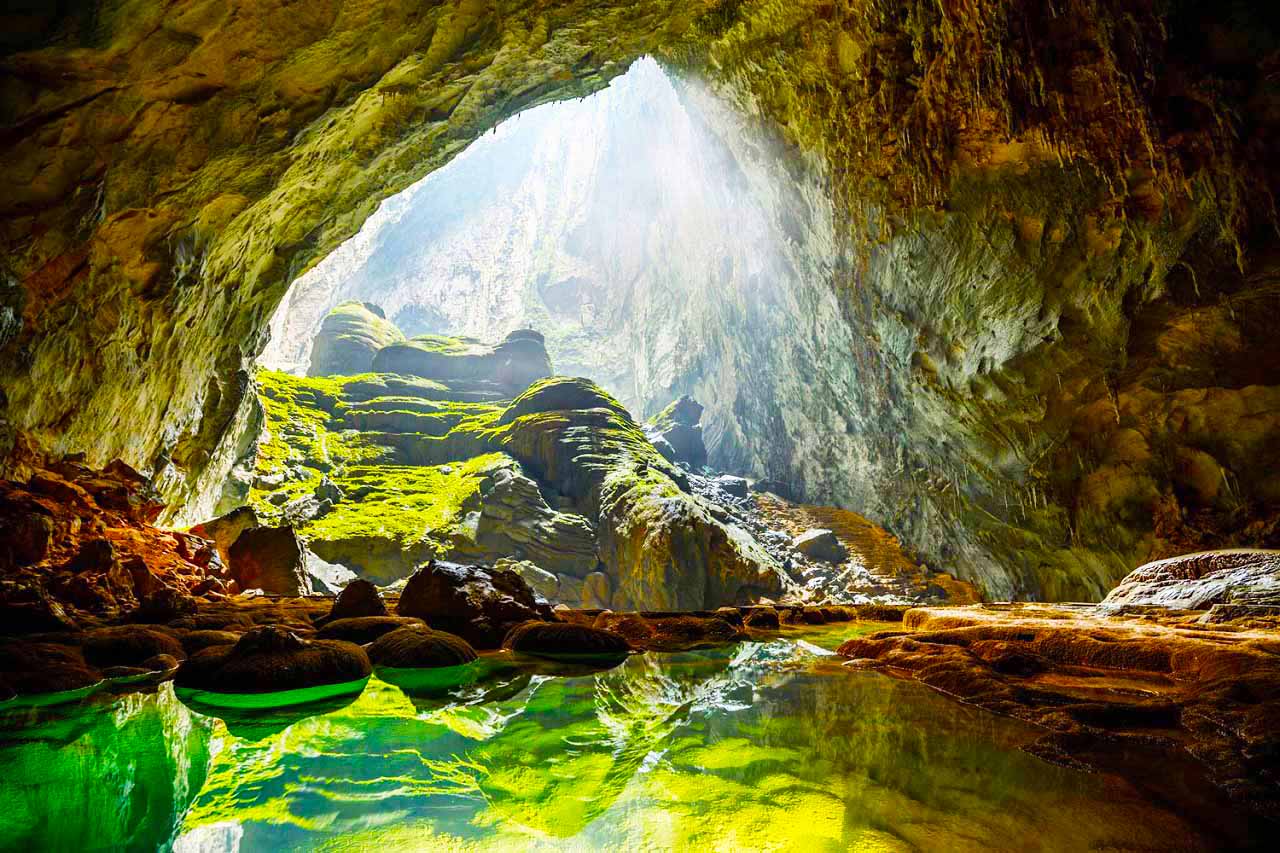
The majestic and enchanting beauty of Phong Nha-Ke Bang (Source: Collected)
This national park is known as “Cave Kingdom” with more than 350 majestic caves including Son Doong - the world's biggest cave, and accompanied by numerous hidden systems beneath towering karsts covered in lush green jungle, resilient rivers with a variety of living lives.
Travelers who visit there can choose to explore based on their interests, from brief afternoon excursions to challenging four-day expeditions, to kayaking, cycling, or hiking adventures. When the night comes, you can also camp and stay within the endlessness of natural wonders in Phong Nha-Ke Bang, the feelings will be totally different from the daytime as the caves acquire an enchanting charm from the gentle radiance of lights along your way.
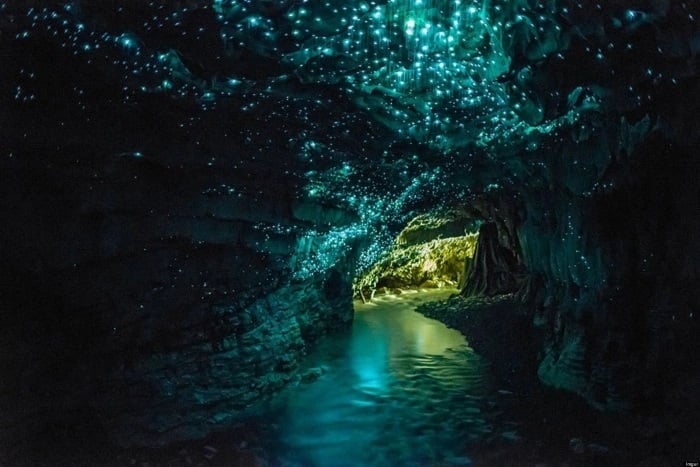
A whole natural cave is illuminated by fireflies (Source: Collected)
3. Hoi An Old Town
Being one of the most famous points of interest in Vietnam, Hoi An (Quang Nam province) has always retained its reputation as of the first quarter of 2023, the number of international visitors to this place reportedly surpassed last year’s total.
From the 15th to 19th centuries, Hoi An had attained foreign cultures mostly from European, Chinese, and Japanese merchants, which have been demonstrated delicately by the ancient temples, yellow walls, colorful lanterns, Japanese bridge, etc. With the mentioned international elements and the indigenous culture of Vietnamese people, Hoi An is special in its own way.
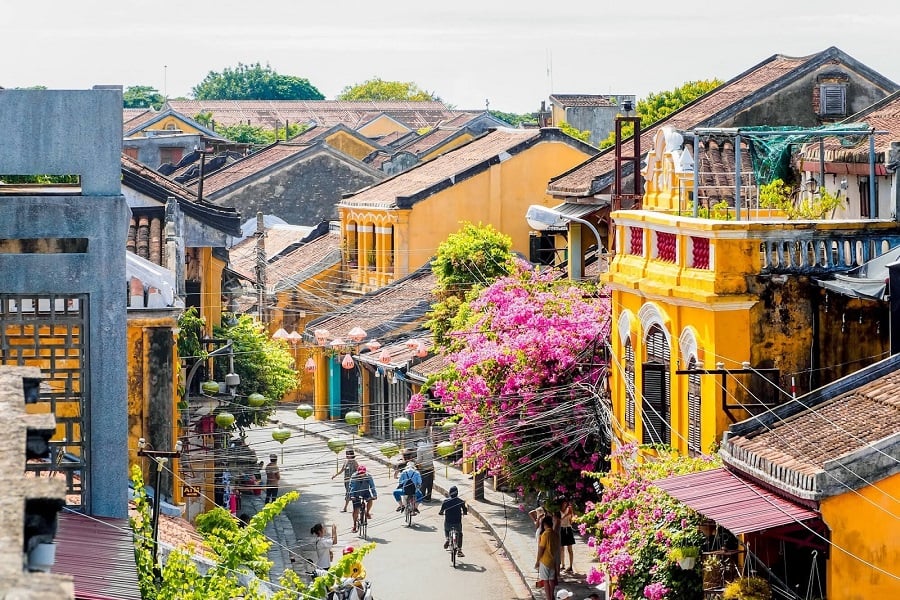 The French-styled architecture with Vietnam's indigenous culture (Source: Collected)
The French-styled architecture with Vietnam's indigenous culture (Source: Collected)
Just by walking or cycling down the Old Town in the daytime, you can experience famous Vietnamese cuisine such as Cao Lau, My Quang, or Com Ga, surrounded by warm-hearted and friendly people. And at nighttime, the whole town is illuminated by thousands of lanterns and flower lights floating along the rivers. We promise that you will never forget that experience, almost enchanted by the beauty of the world.
4. Bui Vien Street
Another destination that allows you to explore by strolling down the street, Bui Vien Street is increasingly becoming popular for Western foreigners, especially younger demographics because of its Western modern atmosphere and lively nightlife.
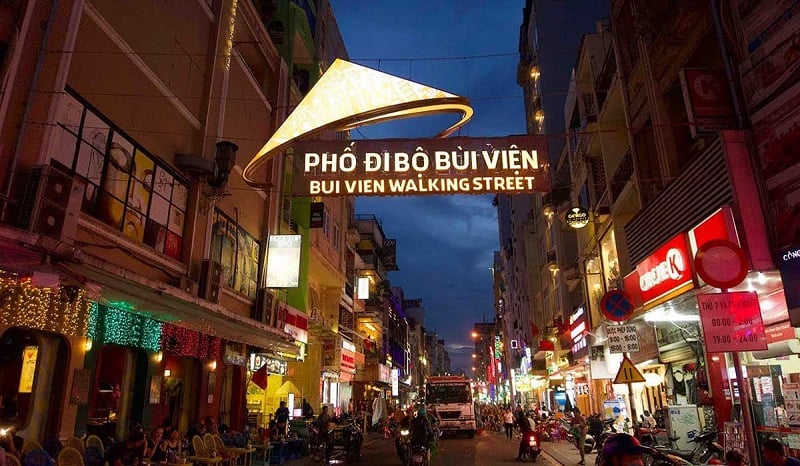 A lively nightlife - Bui Vien Walking Street full of lights and restaurants (Source: Collected)
A lively nightlife - Bui Vien Walking Street full of lights and restaurants (Source: Collected)
Visitors can immerse themselves in hundreds of coffee shops, pubs, fine-dining restaurants, and even folk games by local people in Saigon. It is the fusion of international and traditional cultural values that attracts people to come to this place. As of late, the government has promoted Vietnamese culture thereby organizing many festivals, cultural fairs, performances, etc in alignment with binding laws and regulations.
One of the main concerns of travelers is whether Bui Vien Street is safe for them to explore. Regardless of the ongoing effort to maintain public order and the secure environment of the authorities, there are still uncertainties that foreigners should stay alert and have emergency contacts ready anytime, anywhere.
5. Cai Rang Floating Market
Distance from Saigon less than 200 kilometers, Cai Rang Floating Market is a must-visit place for a unique and ethnic experience.
This floating market is situated along the Cai Rang River, approximately 6 kilometers away from the heart of Can Tho City. Despite the evolution of a convenient road traffic system, Cai Rang Floating Market continues to thrive, owing to its economic, cultural, and tourism significance. Today, it stands as an essential symbol of the Mekong Delta.

Cai Rang Floating Market is a must-visit place for a unique and ethnic experience (Source: Collected)
Thousands of wooden boats flow steadily by the waters, selling you a variety of goods from hot cozy Hu Tieu, to fresh fruits, to colorful textiles and accessories. Besides, you not only purchase distinct stuff but also learn first hand the culture with local people as most of them have been floating on their boats for more than decades.
If you are a fan of cultural tours or simply enjoy talking with locals, you definitely cannot miss out on Cai Rang Floating Market!
Hurray! We have walked you through five captivating landscapes of Vietnam that you don’t want to skip. Now, let’s embark on your Vietnam adventure, fueled by the wonders. Safe travels and may your trip to this enchanting country be nothing short of extraordinary!